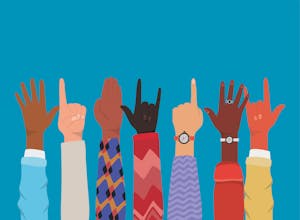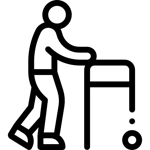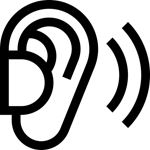- 12 minute read
- Business Management Tips
- Digital Marketing
- Industry Insights
All Skill Levels
Get a behind-the-scenes-look into FareHarbor's 2024 season

One of the main tenets of the tourism industry is to give people the opportunity to experience different places and cultures. When we fail to consider tourists with different accessibility needs, we ignore a huge part of our customer base. By taking the needs of all of your potential customers into consideration, you can increase your bookings and help a whole new segment of people explore the world.
True accessibility begins with universal design — a design concept that focuses on creating an environment that can be accessed and used by everyone, regardless of age, size, or ability. This guide answers your questions about how accessibility will benefit your business and the steps you can take to make your experiences more accessible.
Accessibility means that everyone feels welcome and able to participate, regardless of their unique needs and limitations.
People usually think of accessibility in terms of accommodating people with physical disabilities, such as:
However, accessibility also includes invisible disabilities and other needs that would not typically be considered disabilities, such as:
Accessibility is important, first and foremost, because it creates an inclusive environment that is welcoming to all. It’s simply the right thing to do, and it also has economic benefits for your business:
As we mentioned earlier, true accessibility begins with universal and inclusive solutions. Piecemeal solutions that only address a specific need can introduce further complications and draw arbitrary distinctions between people with accessibility needs and those without. Universal design isn’t about catering to a specific need, but rather designing environments that benefit everyone.
It’s crucial to remember that people with different abilities have the same desire to have a memorable, enjoyable tour as anyone else. Every traveler wants to feel like they were included rather than sidelined as a person with different needs.
 For example, if you offer a city walking tour, and you create a separate tour for people with mobility impairments, guests who take this tour might feel like they didn’t get the same experience as others. Instead of holding a separate tour, consider how you can make your existing tours more inclusive to all — like ensuring all the streets you take are accessible for wheelchairs and other mobility aids, and that there are plenty of planned stops to rest along the way. This would not only benefit people with mobility impairments, but also senior travelers, travelers with children, your tour guides, and pretty much everyone who takes your tour.
For example, if you offer a city walking tour, and you create a separate tour for people with mobility impairments, guests who take this tour might feel like they didn’t get the same experience as others. Instead of holding a separate tour, consider how you can make your existing tours more inclusive to all — like ensuring all the streets you take are accessible for wheelchairs and other mobility aids, and that there are plenty of planned stops to rest along the way. This would not only benefit people with mobility impairments, but also senior travelers, travelers with children, your tour guides, and pretty much everyone who takes your tour.
 Universal design also applies to virtual experiences. For example, by adding closed captions to a virtual tour, you not only make it possible for people who are hard of hearing to participate, but you’re also helping people who are not fluent in the language to learn at their own pace, as well as appealing to guests who enjoy reading along to better understand and immerse themselves in the experience.
Universal design also applies to virtual experiences. For example, by adding closed captions to a virtual tour, you not only make it possible for people who are hard of hearing to participate, but you’re also helping people who are not fluent in the language to learn at their own pace, as well as appealing to guests who enjoy reading along to better understand and immerse themselves in the experience.
This kind of fundamental, universal approach is a more robust solution that can continue to evolve as you better understand your guests’ needs and experiences, and these solutions make everyone feel included.
Now that you better understand why you should work to make your tours more accessible, you’re probably wondering how to do that. This is an evolving process that is different for every business, but here are some places where you can start:
Our world is becoming more accessible, both through advances in mobility aids and increased accessibility of information online. People who haven’t been able to travel in the past have more opportunities to do so now. Making your tours and activities accessible not only opens up a new market for your business but also opens up your part of the world to new groups of people, and that’s what our industry is all about.
Accessible tourism is both good business and good ethics, so there’s really no reason not to strive for increased accessibility. Start by reading reviews and thinking about how to make your business more accessible, both online and in person, and remember that universal accessibility is an ongoing process. Continue your journey by reading our guide to inclusive marketing.